Museum Display Information
Jacobite Rebellions
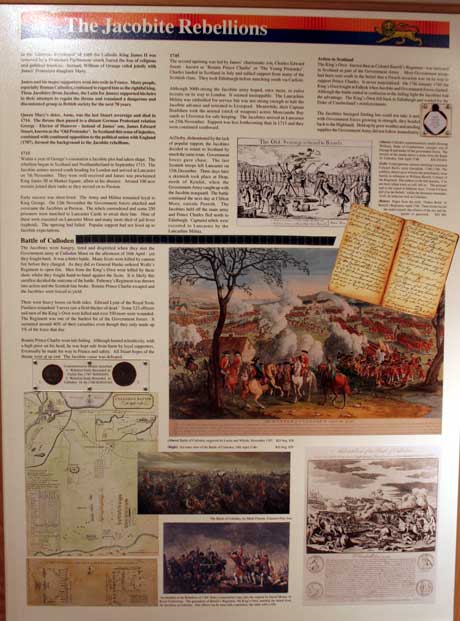
The Jacobites (from ‘Jacobus’, the Latin for James) supported the
heirs of King James II for the British throne. In the ‘Glorious
Revolution’ of 1688 the Catholic King James II was removed by a
Protestant Parliament which feared for political and religious freedom.
He fled to Ireland and was defeated by William of Orange at the Battle
of the Boyne in July 1691. William now ruled as joint sovereign with his
wife, James’ protestant daughter, Mary.
James II went into exile in France. He had many supporters - not only
Roman Catholics, but also those who believed that he was the lawful
King. Others kept in touch with James as a kind of insurance in case
William failed to retain the throne. William died in 1702 and Queen Anne
succeeded him as the last Stuart sovereign.
On the death of Queen Anne in 1714 the throne passed to a distant
relation, George, Elector of Hanover, who became King George I of
Britain and Ireland.
The supporters of the Jacobite cause became a dangerous and discontented
group.
The Fifteen
George I had been on the throne less than a year when news reached
England of a plot to overthrow him and to enthrone Prince James Edward
Stuart, the son of King James II.
The rebellion began in Scotland and Northumberland in September 1715,
but early success was short lived. The Army remained loyal to King
George, and the Militia was called out to quell any trouble. In November
1715 James’ army moved south and the Lancashire Militia left Lancaster
for Preston. On 20th November Prince James marched into Preston and was
proclaimed James III of England. His ‘rule’ was to be short lived.
By 23rd November the Government Army and Militia attacked Preston and
the rebels surrendered. Two hundred and fifty prisoners were marched to
Lancaster Castle by the Militia.
The Rising of 1715 failed because of the lack of English support, even
in Scotland the support of the Stuarts had not been as strong as
expected.
1745
A large Jacobite rebellion took place in 1745 headed by James’ son,
Prince Charles Edward Stuart, ‘Bonnie Prince Charlie’.
Prince Charles landed in Scotland and was supported by many of the
Scottish clans.
The 5000-strong Jacobite army entered England at Carlisle, the
Lancashire Militia was embodied for service, but it was realised that
the Militia would not be strong enough to stop the Jacobite army. The
Militia retreated to Liverpool. As there were no ships available for the
removal of the arsenal Captain Bradshaw and his men took it across the
sands of Morecambe Bay to Ulverston for safe keeping.
An army began to assemble under the Duke of Cumberland and Marshal Wade.
The Jacobite advance was halted at Derby. The Jacobites retreated and
the Government Army followed the last Scottish troops left Lancaster on
15th December, thus allowing Captain Bradshaw to return with the arsenal
still safely in his care. The Government Army caught the Jacobite
rearguard north of Kendal at Shap. A battle took place at Shap, and the
next day at Clifton Moor, outside Penrith. The Jacobites held off the
main army and Prince Charles fled north to Edinburgh. The captured
Jacobite prisoners were escorted to Lancaster by the Lancashire Militia.
Action in Scotland
As part of the Government Army, the King’s Own, then known as Colonel
Barrell’s Regiment were stationed in Scotland. Fearing a French invasion
in support of Prince Charles the majority of the Government Army headed
south. The invasion did not materialise, but in Scotland Jacobite forces
and a section of the Government Army did clash at Falkirk on 17th
January 1746. The King’s Own were present at the battle which ended in
confusion on both sides due to failing light. The Jacobite forces had
the advantage but were unable to obtain a victory. The King’s Own fell
back to Edinburgh and awaited the arrival of the Duke of Cumberland and
his army.
The Government Army now pushed the Jacobites northwards, Stirling was
abandoned and they fell back to Inverness. In need of stores and held up
by poor weather the Government Army failed to follow up the advance.
Battle of Culloden
The Jacobite forces were hungry, tired and dispirited as the
Government Army advanced across Drummossie Moor. On the afternoon of
16th April both sides opened fire. The Jacobites advanced but failed to
break through and a bitter battle followed. Smoke from the guns made it
difficult to see what was going on, and the Jacobite guns had little
success.
As the Jacobite forces charged forward General Huske ordered that
Wolfe’s Regiment should open fire and, although this action killed some
King’s Own men engaged in hand-to-hand fighting with the Scots it
decided the outcome. Pulteney’s Regiment was thrown into the battle, the
Scottish line broke and the Scots turned and fled.
The King’s Own had 123 officers and men killed and wounded out of 350
men in the bitter battle at Culloden. The regiment represented only 5%
of the men present in the Government Army but sustained over 40% of the
casualties.
Bonnie Prince Charlie fled and eventually made his way to France, his
claims to the throne at an end and the Jacobite cause defeated.
Objects on display:
Culloden Commemorative Medals
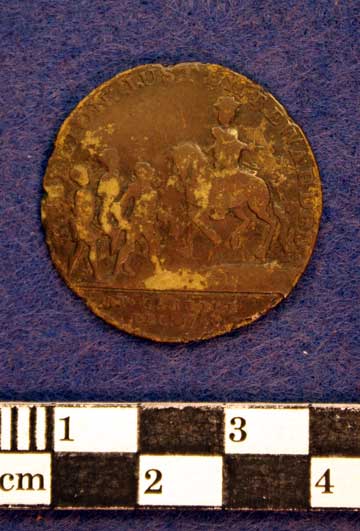
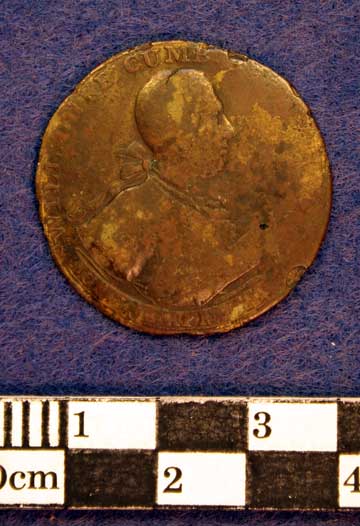
Rebellion: Justly Rewarded At Carlile Dec 1745
Will Duke of Cumberland Born 16 Apr 1721
Accession Number: KO0582/01
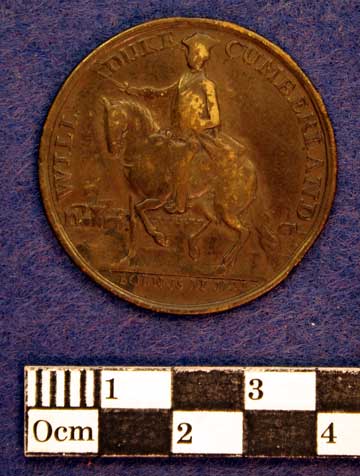
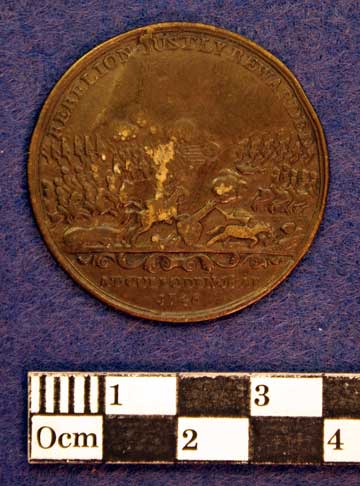
Rebellion Justly Rewarded At Culloden 16 Apr 1746
Will Duke Cumberland Born 16 Apr 1721
Accession Number: KO0351/06
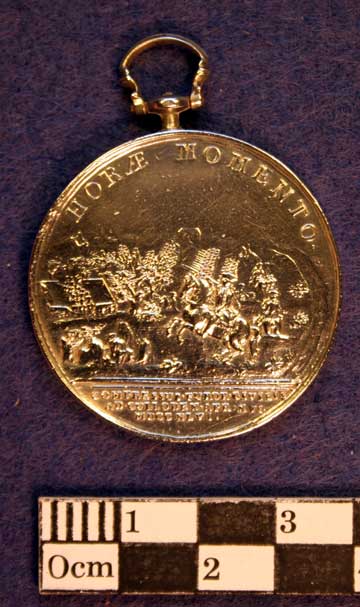
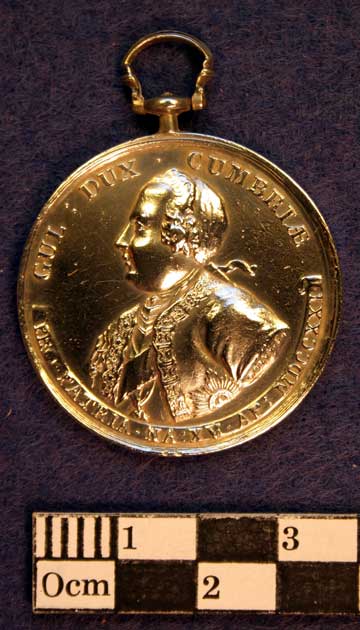
Horae Momento Compressus Furoe Civilis
At Culloden Apr XVI MDCCXLVI
GUL DUX CUMBRIA PRO PATRI NA XV AP: MDCCXXI
Accession Number: KO2024/01
'An Incident in the Rebellion of 1745'
After David Morier by C P Lawson
The grenadiers of Barrell's Regiment, 4th King's Own, meeting the attack
from the Jacobites at Culloden.
One officer can be seen with a spontoon, they other with a rifle.
Accession Number: KO2490/092

Battle of Culloden, a version of the engraving, printed in 1797.
Published by Laurie and Whittle, 53 Fleet Street, London, 1st November
1797.
The King's Own, then known as Barrell's Regiment, was commanded by
Lieutenant Colonel Robert Rich at the battle.
Accession Number: KO2062/03
Spontoon - used by infantry officers - a combined spear and
battle axe, which can be seen in the painting by David Morier.
Accession Number: KO0645/01

Brown Bess Musket
The Brown Bess Musket was introduced in 1720 and was issued to the
King’s Own in 1722. It very quickly became the standard British infantry
firearm, saw use in the Jacobite Rebellions, and was still in use in the
1840s. Its length of service was due to its remarkable durability,
simplicity of action, and comparative reliability.
The name ‘Brown Bess’ comes from the practice of browning the barrel to
prevent rust, and ‘Bess’ comes from either the German ‘buchse’ meaning
gone, or more probably someone's pet name for the weapon.
Accession Number: KO0149/01
Map and Plan of the town of Preston showing the batteries and barricades
of the Rebels and the attacks of the Kings forces commanded by General
Wills, 1715.
Accession Number:
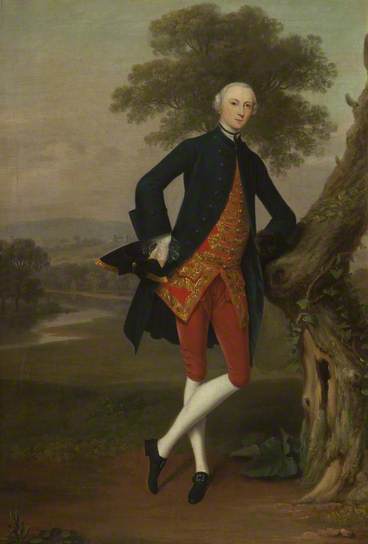
Colonel Sir Robert Rich (1714-1785), around 1756. Oil painting by
Arthur Devis, 1712-1787.
Lieutenant Colonel Robert Rich commanded the Regiment at the Battle of
Culloden, in the absence of Colonel Barrell. The Regiment suffered very
heavy casualties. Sir Robert lost his left hand - notice the empty
fur-lined sleeve - and his right arm was almost severed above the elbow.
He commissioned the successful Preston artist Arthur Devis to paint his
portrait. After Rich’s death in 1785 the painting was left to Mr Duncan,
the Regimental chaplain who had saved his life. The painting was later
returned to the Rich family. Notice the elaborate 18th century frame
decorated with war trophies.
KO 0566/01 Gift of Lady Rich.
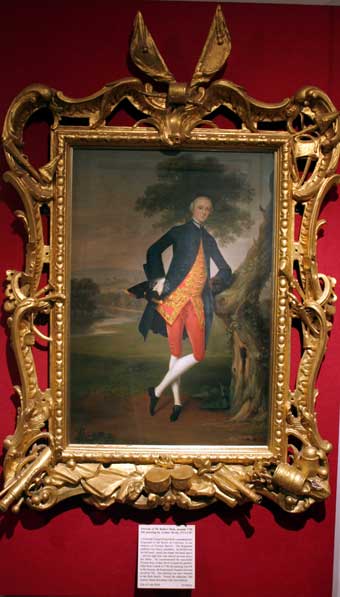
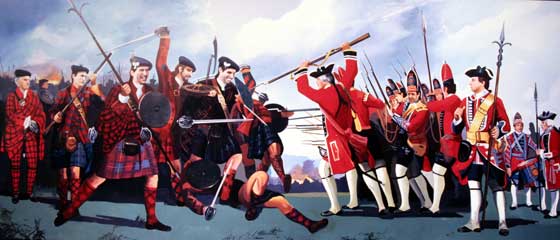
Illustration of the Battle of Culloden by Frank Perkins (after 'An
Incident in the Rebellion of 1745' by David Morier) commissioned by the
museum in 1997 as part of the refurbished displays.
© Images are copyright, Trustees of the King's Own Royal Regiment Museum.
You must seek permission prior to
publication of any of our images.
Only a proportion of our collections
are on display at anyone time. Certain items are on loan for display
in other institutions. An appointment is required to consult any of
our collections which are held in store.













